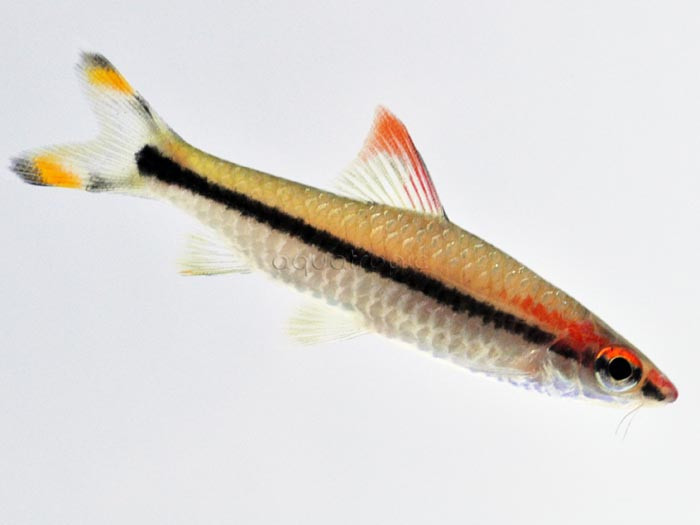The Rose Line Shark (Sahyadria denisonii)

Most species of freshwater fish found in the aquarium hobby have been around for many decades, but not the Rose Line Shark, which only first began to be exported in the late 1990’s.Since then, it has become one of the most desirable species among aquarists and, though still more expensive than most schooling fishes, it can now be found in any wellstocked fish store.
Sahyadria denisonii has gone by many names since it was first discovered in 1865, and you can still quite commonly see it listed as Puntiusdenisonii, Crossocheilus denisonii or Barbus denisonii. It also goes by a few different common names in the aquarium trade: the Rose Line Shark, Denison’s Barb, the Indian Flasher Barb, the Red Line Torpedo Barb, and many more. It is native to a relatively small corner of the world centered on the mountainous upland streams of Southwestern India, where it is said to be most active at dawn and dusk. This has led to it being listed as “endangered” by the IUCN, but, fortunately, this fish is now captive bred in increasingly large numbers, making it far more affordable and taking pressure off of the wild population.
This omnivorous species is not terribly picky in terms of husbandry, and most foods will be eaten with gusto. As a schooling species capable of reaching around 4 inches, it is important to provide a suitably large aquarium (75 gallons or more) to house a group (which should ideally number 6 or more individuals). As they come from cooler mountain waters with high oxygen levels, it’s a good idea to have moderate or high water flow and low nutrient levels, though S. denisonii is generally quite adaptable and seldom shows any real problems in captivity.
This moderately sized and highly active fish will do well with a wide range of species, though it is undoubtedly wise to avoid mixing it with overly timid fishes that could become stressed. Other large barbs, tetras, danios and rasboras make for appropriate tankmates, as do most of the commonly seen catfishes, loaches, rainbowfishes and cichlids. The sexes are mostly identical and breeding is rare in home aquariums, though it has on occasion occurred spontaneously.
With it’s bright and distinctive color patterning and peaceful, active persona, it’s no wonder why the Rose Line Shark has become one of the most exciting new species to enter the aquarium trade in recent memory.